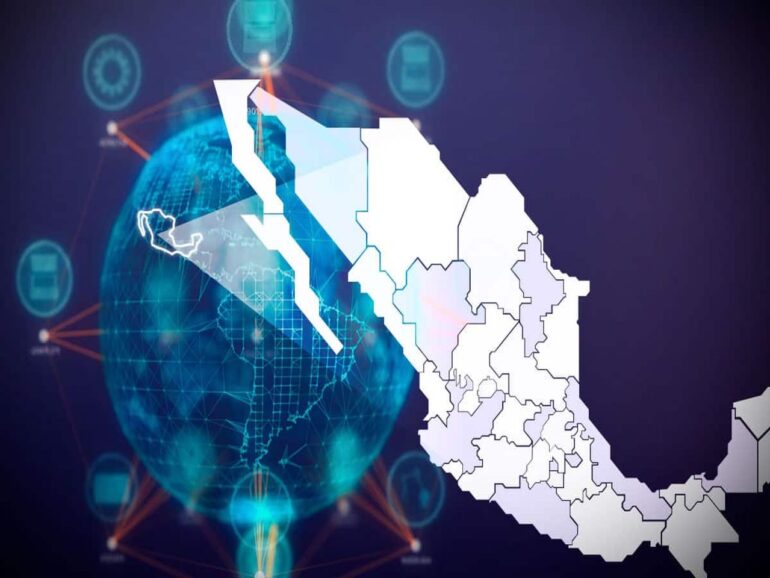Despite facing hurdles such as high interest rates, Mexico’s financial technology sector continues to evolve. Recent findings from a report by Visa and Finnovista reveal that the country is now home to around 770 fintech companies, illustrating a resilient 20% annual growth rate amidst intensifying competition and constrained investment capital.
Mexico’s fintech landscape is robust, featuring nearly 1,000 companies when adding 217 foreign entities from over 22 nations. Over the past five years, the domestic sector has seen a noteworthy compound annual growth rate of 18.4%, with non-Mexican firms increasingly joining the fray in this market of 130 million potential consumers.
Fintechs from the United States lead the charge among foreign fintechs in Mexico, commanding a substantial 25.8% share of international startups. They are followed by Chilean firms at 20.3%, with Colombia and Argentina rounding out the top four with shares of 16.1% and 13.4%, respectively.
Close proximity between both countries and extensive immigration have facilitated the emergence of various fintech business models in Mexico. Companies offering digital remittances and cross-border payments have popped up in recent years to meet the needs of Mexican consumers both in the U.S. and back home.
Nearshoring opportunities for fintechs in Mexico
Broader trends in the Mexican economy also signal promising prospects. Secular factors, such as the so-called nearshoring boom, have sparked optimism among Mexican businesses. The U.S. rewiring of supply chains post-pandemic away from China is anticipated to create significant investment opportunities in the country in the coming years.
“There is increasing cross-border integration and collaboration within the financial technology sector,” said Andrés Fontao, co-founder of Finnovista. “For the U.S. fintech entrepreneurs, this represents an opportunity to tap into a dynamic and rapidly evolving market, while for Mexico, the influx of U.S. startups fosters a competitive environment that accelerates innovation and contributes to the overall maturity of the ecosystem.”
The report noted that the global trend of nearshoring is specifically attractive to fintech firms that focus on the export business sector, as well as in currency exchange and debt collection management for companies.
A financial inclusion opportunity
“Mexico remains one of the largest fintech markets in Latin America,” said Luz Adriana Ramirez, VIsa’s country manager in the country. “It presents a great opportunity to continue driving innovation in digital payments.”
The report found that nearly half of the surveyed fintechs cater to individuals and businesses with limited or no access to traditional banking. But despite fintechs’ emergence, official data shows that the number of adults in Mexico with at least one financial product has remained more or less constant since 2015. This highlights that their impact is still not sufficient to lift Mexicans out of underbanking and that there is significant room to improve further.
Last year proved especially challenging for numerous Latin American fintech companies, with many forced to cut costs drastically or cease operations entirely. The report indicates that over a hundred fintechs exited the Mexican market, either through acquisition, shifting focus to another segment, or halting operations altogether—nearly half of them falling into the latter category. This figure represents an almost 20% increase compared to previous years, highlighting how startups struggled to navigate a complex macroeconomic landscape with limited access to capital.
However, the ecosystem has also witnessed the emergence of new startups, contributing to the industry’s overall growth. While crowdfunding startups experienced a decline, sectors like lending, payments, and remittances have taken the lead. The post-pandemic e-commerce surge has also propelled numerous companies into the Buy Now, Pay Later segment.
“Interest rate war” for deposits in Mexico
While Mexico’s growth exceeded expectations last year, at around 3.2% annually, a slowdown in activity is anticipated for 2024, largely influenced by restrictive monetary policies. The International Monetary Fund projects a 2.1% expansion in GDP this year, which could dampen some of the growth of fintechs. In addition to economic factors, Mexico will hold presidential elections this year, which could also bring some political uncertainty. “High interest rates, nearshoring, and the government’s re-election will largely shape the direction of the ecosystem,” the report states.
Digital banks in Mexico are waging aggressive strategies to compete for the burgeoning market of savers. The rise in interest rates and inflation has resulted in a greater appeal for high-yielding products that offer significant returns on deposits.
High-yield interest rates on deposits contrast with the region’s history of volatile currencies and low returns on traditional bank savings. Nubank led the charge last year with a savings account product boasting interest rates of around 9%, a strategy now embraced by other neolenders in the industry.
Finnovista records that fintechs that offer savings products in Mexico now boast an average rate of 12.9%.


